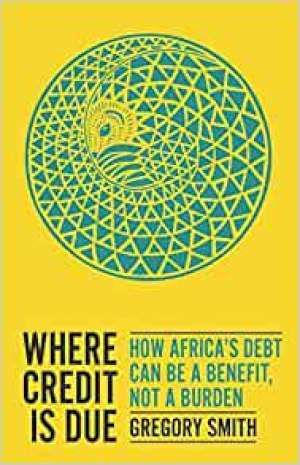29 November 2021
Where Credit Is Due
How Africa’s Debt Can Be A Benefit, Not A Burden
Gregory Smith
2021, Hurst Publishing, 240 pages,
ISBN 9781787384750
Reviewer: Lavan Mahadeva

The dilemma for African countries is that they desperately need to borrow to grow sustainably but suffer dire consequences when income does not materialise for repayment. Gregory Smith guides us expertly through the travails and successes in forty years of Sub-Saharan Africa’s debt and warns that we may still see a rerun of the 1980s borrowing boom that ended in a two-decade-long debt crisis.
There has been real progress in institutions, inflation stabilization, private investment, and economic growth. But there has also been some grand mismanagement and the Covid pandemic recession has hit Africa hard. While there have been only a handful of defaults so far, debt payments are high and the average sovereign debt to GDP post-Covid is in the 60-70 % range. There is about as much wiggle room as a Mopane worm in its cocoon. The book concludes with an organized plan for getting out of danger, emphasising that something more than debt relief is needed.
The author both categorises countries and distinguishes their different experiences with some poignant case studies. Large nations such as South Africa and Nigeria are in a group called Emerging Nations because they have most access to foreign and domestic capital. Even here, there can be huge problems. For example, Nigeria’s non-oil revenue never seemed enough during the military era, and South Africa’s political panorama currently looks grim. Yet, these nations have more options than the second group, Frontier Africa, with only embryonic domestic capital markets (for example, Ghana and Ethiopia). The third group are the mixed bag of the poor and prudent that don’t borrow much either because they are so poor that they cannot or so rich they do not need it (Botswana).
A strength of the book is that it cross-cuts country experiences with engaging narratives. For example, the author has a useful chapter on Chinese lending, which has been important for the Frontier African group. Another narrative is whether markets are unfair to Africa. I would suggest another narrative on the interplay between foreign equity, privatization and debt. Foreign equity ownership is often resisted before a debt crisis and then ironically rushed into after a debt crisis to desperately raise finance.
The author emphasises that transparency is primary. The game is to distinguish between mismanagement and bad luck, and not just creditors but also citizens need to play. It is significant that Chinese lending, though not completely unfavourable in other aspects, has made monitoring even less possible with many loans requiring borrowers to sign NDAs. There are other important steps in the plan, but all seem to require patience and monitoring and hence point to the primacy of transparency.
My favourite passage is where the author describes an investor roadshow where government officials pitch to investors in one glitzy hotel suite after another. An outcome is Eurobond money that can come quickly and with fewer strings attached. This contrasts with ‘long and tedious foreign aid meetings’. Yet, ultimately, the route to a better economic life for Africans must be built on the foundation of human or social capital. Natural resource extraction investment can be collateralised and, certainly, brand new infrastructure makes good press. But all must help progress towards broader outcomes such as those enshrined United National Sustainable Development Goals. Yet, as the author points out, new investment trends, like indexed trackers or ETFs, do not favour Africa in this regard. The discussion on sustainable investment is another intriguing part of the book and to me suggests that sovereign borrowing and foreign aid are still needed.
